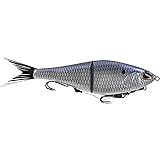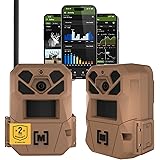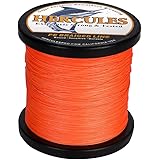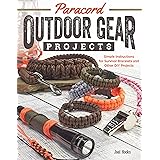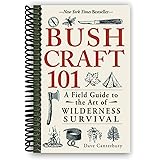Mastering Wilderness Survival: Advanced Techniques and Essential Tips
In the realm of outdoor survival, preparedness is paramount. Statistical analyses reveal that a significant percentage of wilderness emergencies could be mitigated or even prevented with adequate knowledge and the implementation of fundamental survival principles. The accompanying video, “50+ Wilderness Survival Tips!”, offers a compendium of invaluable insights, yet a more detailed exposition of these critical techniques is often required for complete comprehension and effective application. This article expands upon the vital wilderness survival strategies discussed, providing an expert-level guide to enhancing your self-reliance in austere environments.
Mastering Ignition: Essential Fire Starting Techniques
The ability to initiate and maintain a fire is a cornerstone of wilderness survival, providing warmth, purifying water, cooking food, and signaling for rescue. Mastery of diverse fire-starting methods is, therefore, an indispensable skill for any survivalist.
Fungal Fire Starters: Cramp Balls and Horse’s Hoof
Certain fungal species exhibit exceptional charring properties, rendering them highly effective as tinder. The cramp ball fungus, scientifically designated *Daldinia concentrica* and colloquially known as coal fungus, is readily identified by its distinctive charcoal-like appearance. It is frequently discovered on the decaying timber of fallen trees. Upon being cleaved, its dusty, arid core is exposed, which possesses the remarkable capacity to readily accept a spark from a fire steel, subsequently smoldering into a robust ember. This enduring ember can then be utilized to ignite more voluminous tinder bundles.
Similarly, the horse’s hoof fungus (*Fomes fomentarius*), recognizable by its ungulate-like morphology, offers analogous utility. The layer situated directly beneath its exterior epidermis is characterized by its fibrous texture, which is highly receptive to sparks and sustains a smolder for an extended duration. Consequently, it serves as an excellent medium for igniting other flammable materials or functions as a portable fire carrier, enabling the transfer of fire to a new location without reignition.
Natural Tinder Sources: Birch Bark, Thistle, and Pine Resins
Beyond specialized fungi, numerous natural materials are proficient tinder sources. Birch bark, in particular, is renowned for its high resinous oil content, which renders it exceptionally flammable. When processed into thin, wispy strips, it readily catches sparks, facilitating rapid fire ignition. It is crucial to note, however, that bark from dead, fallen, or rotten trees may have depleted resin levels, diminishing its flammability. This impediment can often be overcome by scraping the surface of the bark with a blade, producing fine, resin-rich dust that is more receptive to sparks.
The pappus of thistle plants, comprising thousands of tiny, fluffy seeds, also constitutes an excellent tinder. Thistles are typically found in dense clusters, allowing for the expedient collection of substantial quantities. Additionally, dead pine needles, abundantly scattered across forest floors year-round, serve as highly effective kindling. Pine resin, frequently observed as encrustations on pine bark, not only possesses medicinal properties but is also highly flammable. Crushing solidified resin blocks into granules or powder significantly increases their ignition potential. Fresh, gooey resin is equally flammable and can be utilized directly or melted down to create an adhesive for primitive tool construction or shelter repair.
Fatwood Utilization: Leveraging Pine’s Heartwood
Fatwood, essentially the resin-saturated heartwood of pine trees, is another premium natural fire-starting material. This wood is deeply impregnated with the same combustible pine resin. For this reason, thin shavings and sawdust derived from fatwood are exceptionally flammable, often capable of catching a spark with minimal effort. Its dense resin content ensures a prolonged, intense flame, making it a reliable resource in challenging conditions.
Improvised Tinder & Igniters
Even commonplace items can be repurposed for fire starting. The inner portion of twigs, particularly on rainy days, typically remains dry and can be scraped or shaved to procure fine tinder. A standard pencil sharpener can be utilized to efficiently generate fine wood shavings from dry twigs. Additionally, the fluffy down from young bird feathers, when exposed to a spark, ignites into flame with surprising vigor, proving to be a potent, albeit less common, tinder source. Cattail seed pods, prevalent in wetland ecosystems, also contain thousands of fine, fluffy seeds that are highly receptive to sparks, mirroring the utility of thistle seeds.
Sourcing and Purifying Water in the Wild
Access to safe drinking water is critical for survival. Dehydration can rapidly impair cognitive function and physical endurance, underscoring the necessity of effective water procurement and purification strategies.
Primitive Water Collection Methods
Natural condensation represents a viable water source. Heavy dew accumulating on foliage, particularly prior to sunrise, can be collected by tying absorbent rags or spare clothing around ankles and waist, walking through dew-laden grass, and then wringing the collected moisture into a container. Moist moss, frequently found in humid environments, also holds considerable water. Approximately one liter of potable water can be extracted within 20 minutes by harvesting and wringing out large bundles of moss, especially following recent rainfall. While the taste may be unpalatable, its hydrating properties are invaluable.
Field Expedient Water Filtration Systems
Prior to chemical or thermal purification, water should ideally be filtered to remove gross contaminants such as sediment, animal feces, and plant matter. A rudimentary three-tiered filter can be constructed using readily available materials. Ground charcoal is packed into a sock or fabric, followed by a layer of sand, and finally, a top layer of grass. The grass functions to intercept larger particulate matter, the sand filters finer granules, and the charcoal acts as an adsorbent for chemical contaminants and improves taste. This system significantly enhances the palatability and safety of collected water.
Boiling and Chemical Purification Protocols
Boiling is arguably the most reliable method for water purification, effectively neutralizing most pathogens. A makeshift canteen can be fashioned from a sheet of tin foil by forming it around a smooth rock or fist, creating a bowl that can be placed near a fire to boil water. Placing tin foil or a matching cup over the top of a canteen during boiling reduces heat loss and accelerates the process, conserving fuel and time. Alternatively, water purification tablets provide a chemical means of disinfection. Carrying a sandwich bag and a straw, water can be collected, a tablet added, and then consumed directly through the straw, offering a portable and efficient solution.
A surprising, yet effective, improvised tool for water collection and solar sterilization is a condom. Its elasticity and capacity allow for a considerable volume of water to be contained. If clear, the sun’s UV rays can assist in purification, although boiling or chemical treatment remains the most dependable approach. Moreover, for comprehensive preparedness, it is imperative to waterproof all essential gear, including compasses. Many compasses, especially more economical models, are susceptible to water ingress, which can obstruct the needle and compromise accurate readings, highlighting the importance of protecting navigational instruments.
Effective Signaling for Rescue Operations
In a survival scenario, attracting the attention of potential rescuers is paramount. Various signaling methods, both primitive and modern, should be understood and practiced.
Visual Signal Fires and Torches
A signal fire is an exceptionally effective visual beacon. By placing living green plant or tree matter, such as pine or spruce boughs, over an established fire, copious plumes of thick, dense white smoke are generated. This smoke column is highly visible from aerial perspectives, indicating distress. For more immediate, localized signaling, a signal torch can be constructed by splitting the tip of a sturdy stick approximately five inches deep and stuffing the cavity with substantial quantities of birch bark. This design ensures rapid ignition, enabling quick deployment into a tree line to wave and attract the attention of passing aircraft, vehicles, or vessels.
Reflective Surfaces: Space Blankets and Signal Mirrors
Space blankets, beyond their thermal properties, are highly versatile signaling tools. By securing a space blanket between two stakes, a fire reflector wall can be created, maximizing heat radiation back towards a shelter. Alternatively, rolling the edges of a space blanket around sticks creates a large, highly reflective surface. This “giant mirror” can be utilized to reflect sunlight towards the horizon or skyward towards aircraft, producing an intense flash that is incredibly difficult to miss from the air. Similarly, dedicated signal mirrors are compact and highly effective, capable of producing bright, directional flashes over vast distances. It is important to remember that in the Northern Hemisphere, the sun never traverses the northern sky, limiting signaling angles. Employing two signal mirrors, one directed south towards the sun and another reflecting that light north, can overcome this directional limitation, albeit requiring a higher degree of dexterity.
Auditory and Pyrotechnic Devices
While natural methods are valuable, manufactured signaling devices offer enhanced efficacy and reliability. Whistles provide a high-pitched, far-reaching auditory signal. Signal flares, available in both handheld and rocket-parachute varieties, offer intense visual cues, particularly effective during low-light conditions. Smoke grenades produce dense, colored smoke, ideal for daytime signaling. Glow sticks offer sustained, low-intensity light for close-range signaling or marking. Reliance on a single signaling method is inadvisable; a diversified signaling kit significantly increases the probability of detection and rescue.
Constructing and Insulating Survival Shelters
Protection from the elements is a fundamental survival requirement. Effective shelter construction and personal insulation are crucial for maintaining core body temperature and preserving energy.
Thermal Retention: Personal and Shelter Insulation
Insulation is critical for thermal regulation, both within a shelter and for personal attire. Beyond insulating a physical shelter, clothing can be enhanced by stuffing it with dry grass and leaves. This creates additional air pockets, effectively trapping body heat and preventing hypothermia. Within a shelter, natural materials such as layers of pine, spruce, or fir branches provide a substantial insulating bed, creating a barrier between the body and the cold ground. This layering technique significantly reduces conductive heat loss.
Utilizing Space Blankets for Climate Control
Space blankets are indispensable survival items. Internally, they can be affixed to shelter walls to reflect body heat inwards, substantially increasing ambient temperature. Conversely, in hot weather environments, a space blanket with a reflective surface should be oriented outwards to reflect solar radiation, thereby assisting in keeping the interior cooler. The versatility of these blankets extends to fire management; positioned as a fire reflector wall, they ensure maximal heat projection towards the occupant, optimizing the efficiency of fuel consumption.
Improvised Shelter Materials
Common items such as trash bags possess remarkable utility for shelter construction. They can be stuffed with dry leaves and grass to create a padded, insulated bed, or employed as emergency bivvy bags, ponchos, or temporary shelters. Their waterproof nature makes them ideal for collecting rainwater or serving as a moisture barrier to prevent ground dampness. Additionally, large strips of bark, particularly from fallen or standing birch trees, can be utilized as makeshift roof tiles. Incorporated into a natural shelter, these bark strips create a cascading, waterproof layer, effectively repelling precipitation. The Keffiyeh, a multi-purpose cloth, serves as an impromptu tourniquet, bandage, water filter, sunshade, firewood carrier, and insect net, underscoring the value of versatile items in a survival kit.
Wilderness First Aid and Medicinal Plants
Medical emergencies in the wild demand resourceful and often unconventional treatment methods. Knowledge of medicinal plants and improvised first aid techniques can be life-saving.
Astringents and Antiseptics: Crab Apples and Pine Resin
Natural remedies can provide rudimentary medical care. Raw crab apples contain astringent properties, which cause tissues and blood vessels to constrict. When rubbed over a wound or laceration, this effect can assist in staunching minor bleeding and promoting healing. Pine resin, beyond its flammability, possesses antiseptic qualities. Granulated pine resin mixed with water creates an antiseptic liquid for external topical applications. As a gargle, it can combat throat, mouth, or tooth infections. Fresh, gooey pine resin can be applied directly to open wounds as a protective and antiseptic dressing.
Combatting Intestinal Afflictions: Tannic Acid Sources
Drinking untreated water carries a significant risk of intestinal infections such as dysentery and cholera. Certain plants offer natural remedies for these debilitating conditions. Acorns and oak bark are rich in tannic acid, a potent anti-diarrhea agent. Brewing these materials in hot water yields a medicinal tea effective against dysentery, cholera, and various intestinal problems. This tannic acid tea can also be gargled to alleviate ulcers and throat infections. Leaves from the blackberry plant, while containing a lower concentration of tannic acid, offer similar therapeutic benefits. For mild constipation relief, a tea brewed from the fleshy part of rose hips and young leaves, or from dandelion plants (the entirety of which is edible), can be beneficial. Rose hips are also a significant source of Vitamin C, bolstering overall health.
Pain Relief and Anti-inflammatory Agents: Willow Bark and Dock Leaves
The inner bark of willow trees contains salicin, a compound closely related to the active ingredient in aspirin. Steeping or chewing willow bark provides an effective means of alleviating symptoms of cold, fever, and, most importantly, acts as a potent pain reliever. Caution is advised for individuals with aspirin allergies. Dock leaf sap contains a natural antihistamine; chewing the leaf and applying the saliva-dock mixture to stings or bites provides relief from itching and discomfort. Conveniently, dock leaves are often found in proximity to stinging nettles, offering an immediate remedy.
Addressing Environmental Hazards: Snow Blindness and Hydration
Snow blindness, a painful condition caused by the sun’s ultraviolet rays reflecting off snow, can lead to temporary or even permanent eye damage. Prevention is key: smearing charcoal under the eyes reduces glare and absorbs light, a technique utilized by athletes. Alternatively, cutting thin eyeholes in a piece of bark and wearing it like sunglasses offers a primitive but effective solution. Regarding hydration in cold environments, consuming snow and ice directly is counterproductive; it lowers core body temperature, compelling the body to expend additional calories to warm the ingested water. Melting and warming snow or ice before consumption is the recommended practice. Furthermore, despite popular misconceptions, consuming urine in a dehydrated state exacerbates dehydration due to its high salt concentration, as famously asserted by survivalist Cody Lundin.
Emergency Medical Improvs
For urgent wound care, high-percentage alcohol (e.g., 150 proof or higher) can serve as a last-resort antiseptic for cuts, wounds, lacerations, and burns if no other medical supplies are available. Sanitary towels and tampons, designed for absorbency, make excellent bandages for external wounds or for plugging deep punctures. Tampons can also be disassembled to expose fine fibers, which function as effective tinder.
For oral hygiene, grinding charcoal and mixing it with a few drops of water creates a makeshift toothpaste. The abrasive charcoal particles are sufficient to clean teeth without causing damage, maintaining oral health in prolonged survival scenarios.
Improvised Tools and Resource Maximization
Resourcefulness is a hallmark of successful wilderness survival. The ability to repurpose items and create tools from natural materials can dramatically improve a survivor’s prospects.
Crafting Ad Hoc Weapons and Utensils
Spent shotgun shells can be melted over a fire and reshaped. By poking a knife through the melting shell, a makeshift arrowhead can be formed. Excess material is trimmed, and the hollow cavity is filled with clay or wet mud to provide weight and stability. Tools or weapons constructed from wood can be fire-hardened by hovering them over a flame without combustion. This process evaporates moisture, resulting in a significantly more durable implement.
Multi-purpose Utility of Common Items
Duct tape, a ubiquitous survival item, offers both adhesive properties and serves as an emergency cordage for shelter construction or patching holes in tarps. Paracord, when melted over a flame, temporarily yields a handy adhesive for quick repairs, such as attaching an arrowhead or patching a small tear. Tin foil, beyond its use in water boiling, can be scrunched into a ball and utilized as an abrasive cookware cleaner, efficiently removing dried food residue and preventing mold growth. Guitar strings, due to their strength and thinness, can be repurposed as highly effective snares for small game. Rat traps, often overlooked in survival kits, are remarkably efficient and foolproof for catching small animals, particularly when secured to a tree to prevent the animal from escaping with the trap.
Strategic Foraging and Food Consumption
When food resources are scarce, strategic consumption becomes vital. It is recommended that any available food be consumed at night. During nighttime hours, the body expends a significant amount of calories to maintain core warmth, making it the optimal time to provide the body with essential fuel to support these metabolic demands. This practice helps to optimize caloric utilization for thermal regulation and sustained energy.
Environmental Observation for Enhanced Situational Awareness
Observing the natural environment provides critical cues for situational awareness. The adage “Red sky in the morning, sailor’s warning” often holds true; a red sky at dawn can indicate an approaching storm. While not every storm will directly impact one’s location, this meteorological indicator warrants consideration, potentially influencing decisions to remain in camp for a longer duration rather than venturing out and being caught in inclement weather. Such proactive observation skills are instrumental in avoiding unnecessary risks and enhancing overall survival prospects.



